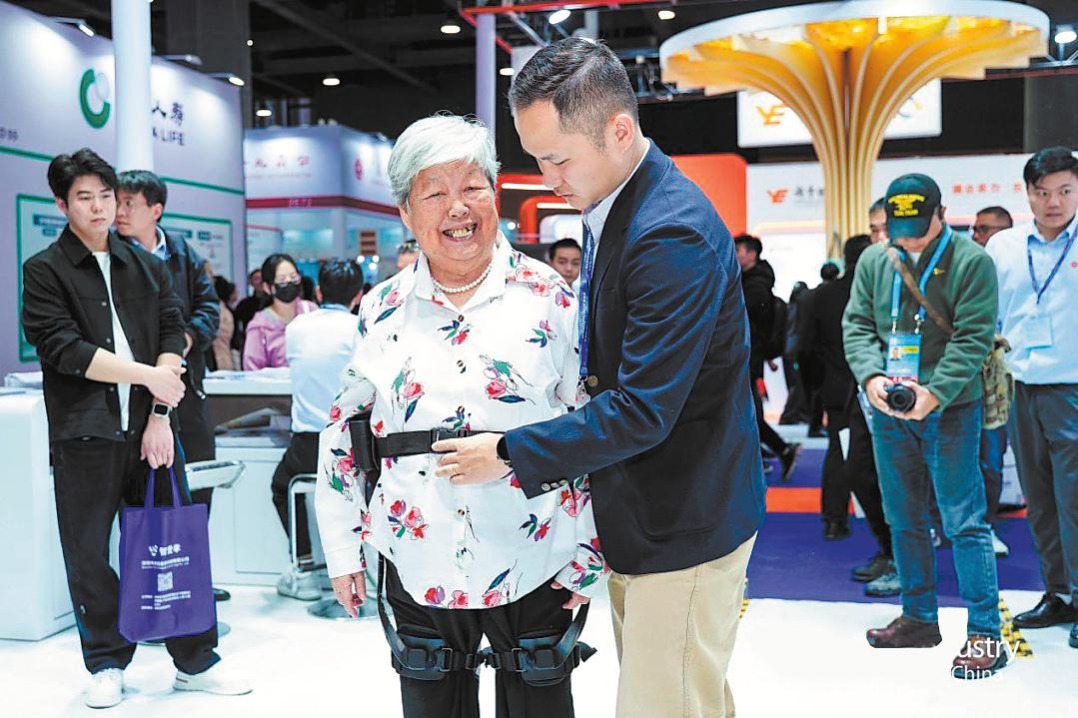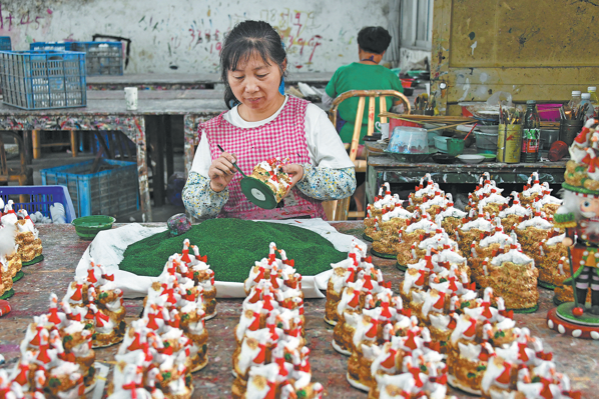Drawing inspiration
A new book series for children is based on stories of Dunhuang art, Yang Yang reports.

Following the best-selling book series Monsters in the Forbidden City, Chinese writer Chang Yi's new series for children, Fantastic Travels in Dunhuang, was recently released and has become a best-seller on Dangdang, a big online bookstore in China.
The new series is based on the frescos of the Mogao Grottoes in Dunhuang and Yulin Grottoes in Guazhou in Northwest China's Gansu province.
While in her previous series, Chang created stories of monsters borrowed from Chinese legends, in the new series she adapts the stories found in the frescos.
"I hope that after reading my books, kids will recognize the frescos I mention in the stories when they visit the grottoes," she says.
One of the chapters is based on the story of a princess from The Sutra on the Wise and Foolish represented by a fresco in cave No 98 in Mogao.
In the ancient Indian kingdom of Kosala, King Prasenajit had an ugly daughter that he always locked inside the palace in case anyone would see her. When the princess reached marriageable age, the king married her to a poor man with dowries of a high official position, a good fortune and a palace, under the one condition that he must lock her inside the palace and not let anyone see her.
One night, the husband attended a feast together with other officials. Curious about how ugly the princess was, the officials got him drunk, took his keys and opened the princess' door. Disliked by the husband, the princess prayed to the Buddha every day for a beautiful look. Just before the door was opened, Buddha manifested himself and fulfilled her wish.
Hearing the good news, the king happily took the daughter back and she lived happily ever after.
"Committed sins in previous lives can make you 'ugly', in the logic of Buddhist karma," Chang says.
"It's impossible to tell such a story to children today.
"Actually there are a lot of stories in the frescos that cannot be told to children because they are bloody and violent, or against modern ethics."
The stories in the frescos are highly religious. Even the journey of Zhang Qian featured in the fresco was for a religious purpose, she says.
In the Han Dynasty (206 BC-AD 220), Zhang went to explore the world outside China as the imperial envoy and brought back valuable information about Central Asia-as a pioneer of the ancient Silk Road.
"Frankly, I don't want my young readers to come into contact with religion while reading my books," she says.
As a result, Chang spent two years researching in the "endless sea of Dunhuang studies", trying to find, among the papers from all over the world, the origins of the Buddhist stories in the frescos, "since many of them were adapted from folk tales in ancient India, Nepal, Dunhuang, or other parts of China".
Based on the original version of those stories, Chang created her own versions that cater to contemporary tastes and morality.
"Since people in ancient times could adapt those folk tales, so can I," she says.
However, it does not mean that she could fabricate everything. Her research included the details of the way of life at the time when the stories are set, because she needed to accurately describe customs, makeup, clothing, furnishings, transportation, decorations and architecture.
In Chang's version, the ugly princess did not turn into a beauty. As she found through her research, the folk tale came from ancient India under the caste system. Being of "low birth", King Prasenajit was looked down upon by people, although Kosala was really powerful under his reign. When Prasenajit offered to marry a princess from the neighboring country, he got a slave disguised as a princess instead. However, the couple lived happily. When their daughter was born, it was said she was astonishingly ugly.
"Perhaps she was not ugly at all. People just made up the story to mock the 'low birth' of the king and queen," she says.
As a result, in her story, the ugly princess escapes from the palace with the help of the heroine of the book, Luo Yiyi, a 13-year-old student from a middle school in Beijing. The book starts with Luo stumbling into the world of cave No 98 at Mogao Grottoes. Through Luo's eyes, the ugly princess is not as ugly as she was rumored to be. Bold and straightforward, the princess aspires to see the world outside the palace.
When they escape to a village, they meet a young man named Hao Jun who makes rouge and powder. The princess immediately falls in love with him. The young man helps the princess to apply the rouge and powder, which makes her look pretty. The princess offers to marry Hao and is accepted.
She asks him: "Don't you think I'm ugly?" Hao says that, as a cosmetics seller, he has seen a lot of beautiful girls, but few are as interesting as her.
The princess takes Hao back to the palace and, as the original version goes, the king happily marries his daughter to him together with bestowing a high official position, a good fortune and a palace.
But unlike the original story, Hao helps the princess to put on makeup before leaving for the feast. So when the curious officials open the door, they find a beautiful princess.
In Chang's version, it is not Buddha, but the husband, that helps the princess-unlike the story featured in cave No 98, showing that the princess became pretty because of her prayers.
Similarly, Chang imparts charming personalities and interesting stories to other female characters from the frescos in Mogao, such as Cao Shijiuniang from cave No 98 and the three daughters of Mara-Tanha, Raga and Arati-in cave No 254.
Mara's three beautiful daughters were actually very powerful, but they were tragically turned into ugly old ladies by Buddha.
"It's so unfair, so I made up some stories to highlight their power and personalities," Chang says.



Today's Top News
- China holds central rural work conference
- President Xi to deliver New Year's message to ring in 2026
- Xi's diplomacy in 2025: Shedding light on a world at crossroads
- China to apply lower import tariff rates to unleash market potential
- China proves to be active and reliable mediator
- Three-party talks help to restore peace






























